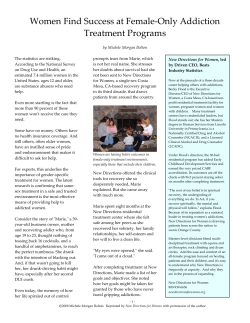
How to develop a taxonomy of general medical practices performance development
How to develop a taxonomy of general medical practices to support and encourage performance development Health Inequalities National Support Team Enhanced Support Programme 3 DH INFORMATION READER BOX Policy HR/Workforce Management Planning/Performance Clinical Estates Commissioning IM&T Finance Social Care/Partnership Working Document purpose Best Practice Guidance Gateway reference 13582 Title How to Develop a Taxonomy of General Medical Practices to Support and Encourage Performance Development Author Peter Counsell Publication date 05 Mar 2010 Target audience PCT CEs, NHS Trust CEs, Care Trusts CEs, Foundation Trust CEs, Directors of PH, Local Authority CEs Circulation list SHA CEs, Medical Directors, Directors of Nursing, Directors of Adult SSs, PCT PEC Chairs, PCT Chairs, NHS Trust Board Chairs, Special HA CEs, Directors of HR, Directors of Finance, Allied Health Professionals, GPs, Communications Leads, Emergency Care Leads, Directors of Children’s SSs, Voluntary Organisations/NDPBs Description One in a series of “How to” guides published as part of the Redoubling efforts to achieve the 2010 National Health Inequalities Life Expectancy Target resource pack Cross ref Systematically Addressing Health Inequalities Superseded docs N/A Action required N/A Timing N/A Contact details Health Inequalities National Support Team National Support Team (NSTs) Wellington House 133-155 Waterloo Road London SE1 8UG 0207 972 3377 www.dh.gov.uk/hinst For recipient’s use HowtodevelopaTaxonomyofGeneralMedicalPracticestosupport andencourageperformancedevelopment Population focus Population health 10. Supported self management Systematic community engagement (C) Systematic and scaled interventions by frontline services (B) 9. Responsive services Optimal population outcome Challenge to providers 13. Networks, leadership and coordination 6. Known population needs 8. Equitable resourcing Personal health Frontline service engagement with the community (D) Community health 4. Accessibility 2. Local service effectiveness 7. Expressed demand Partnership, vision and strategy, leadership and engagement (A) 5. Engaging the public 12. Balanced service portfolio 11. Adequate service volumes 1. Known intervention efficacy 3. Costeffectiveness Bentley C (2007). Systematically Addressing Health Inequalities, Health Inequalities National Support Team. Foreword TheHealthInequalitiesNationalSupportTeam(HINST)haschosentoprioritisethistopic asoneofits‘Howto’guidesforthefollowingreasons: • Itoffersthepotentialtosystematicallyimprovetheoutcomesfromevidence-based treatmentofpatientswithpotentially‘killer’conditions,onascalethatcouldenable theindividualpatientqualityimprovementstoadduptoapopulation-levelchange. • Specificallywithinthe‘Christmastree’diagnosticitaddressesthefollowingcomponents: – Localserviceeffectiveness(2).Clusteringofpracticeslikewithlikeinrelationtothe characteristicsofthepracticepopulationallowspracticeperformanceonservice outcomestobebenchmarkedappropriately,enablestheidentificationof‘cluster champions’,allowspracticessharingthesamecontexttoexchangeexperienceon whatworksandwhatdoesn’t,andenablestheprimarycaretrust(PCT)toprovide differentialinputstopracticesbasedontheirdemography. • AdoptionofthesuggestedclusteringofpracticesshouldhelpmeettheQualityand ProductivityChallengebyprovidingpracticeswithbenchmarkoutcomesachieved byotherswithasimilarpracticeprofile,andsohelpingto‘raisethebar’onwhatis realisticallypossible. • Successfuladoptionofprocessessimilartothoseoutlinedherewoulddemonstrate gooduseofWorldClassCommissioning(WCC)Competencies: – Clinicalleadership(4) – Stimulatesprovision(7) – Innovation(8) – Performancemanagement(10). 1 HowtodevelopaTaxonomyofGeneralMedicalPracticestosupport andencourageperformancedevelopment CoNTexT Thisguideprovidesexamplesofhowtheprocesshasbeenundertakensuccessfullyand recommendsstepstocreatingagroupingorTaxonomyofPractices.Thisguideneedsto readalongsideHow to develop and implement a balanced scorecard. STePS To deVeLoP A TAxoNoMY oF PrACTICeS TheDepartmentofHealthhascirculatedthePrimaryCareCommissioningSupport ApplicationproducedbythePrimaryCareCommissioningTeam.Thisapplicationtool allowscomparisonsbetweenPCTsandbetweenpracticesbasedonseveralsocio-economic indicatorsthatarealreadyavailableinthisapplication.ItissuggestedthatPCTsuse thistoolasthebasistorankpracticesbytheirIndexofMultipleDeprivation(IMD)and combinethiswithananalysisofdemographicfactors.Thiswillenablesegmentation. PCTsshouldconsiderinvolvingtheirequalityanddiversityleadstoexplorehowthistool canbelocalised,incorporatingotherequalitydimensions,nationalequalityguidanceand localequalitypolicies. Step 1 UsingthePrimaryCareCommissioningSupportApplication,rankpracticesaccording totheIMD2007score. Figure1isasimpledemonstrationofhowpracticescanbegroupedtogetherbasedon theIMD.Thisallowscomparisonofresultstobemadebetweentruepeers:practicesthat shareasimilarpopulationbasedontheirIMDscores. 2 HowtodevelopaTaxonomyofGeneralMedicalPracticestosupport andencourageperformancedevelopment Figure 1: Indicator table – GP practice level back to main menu Please select your PCT: Select a GP practice to compare it against 40 most similar practices in England, as measured by IMD: Select indicator category: Please select an Indicator: Rank 1 2 3 4 5 6 7 8 9 10 11 12 13 14 15 16 17 18 19 20 21 22 23 24 25 26 27 28 29 30 31 32 33 34 35 36 37 38 39 40 41 42 43 44 45 46 47 48 49 50 51 52 53 54 55 56 Code P82641 P82625 P82640 P82642 P82633 P82629 P82013 P82657 P82617 Y00186 P82004 P82626 P82609 P82037 P82616 P82029 P82008 P82660 P82030 P82652 P82002 P82012 P82628 P82018 P82033 Y00199 P82022 P82624 P82009 P82011 P82634 P82019 P82010 P82001 P82020 P82007 P82627 P82025 P82607 P82613 P82036 P82631 P82006 P82016 P82014 P82615 P82637 P82031 P82015 P82003 P82005 P82650 P82021 P82023 P82034 P82643 Bolton All practices within PCT Top 10%: 43.1 Bottom 25%: 21.2 Top 25%: 39.6 Bottom 10%: 18.1 Median: 31.9 Aspiration: 0 (56 peer practices in PCT) Needs Socioeconomics IMD Data source: The index of multiple deprivation derived from seven “domains” of deprivation (income, employment, health deprivation and disability, education, skills and training, barriers to housing and services, crime and disorder and living environment) (The Office for National Statistics). 0 10 20 30 40 50 GP practice PCT Value The Derby Practice Bolton 48.5 Charlotte Street Surgery Bolton 48.1 Pikes Lane 3 Bolton 46.1 Great Lever Health Centre 2 Bolton 44.0 Great Lever Health Centre 1 Bolton 43.1 Pikes Lane 2 Bolton 43.0 Lever Chambers 2 Bolton 42.0 Greenland Road Bolton 41.8 Astley Brook Surgery Bolton 41.6 3D Medical Centre Bolton 41.2 Swan Lane Medical Centre Bolton 40.4 Halliwell Surgery 3 Bolton 40.3 Shanti Medical Centre Bolton 40.0 Farnworth Health Centre 1 Bolton 39.6 Crescent Road Surgery Bolton 39.6 Halliwell Surgery 2 Bolton 39.0 Stonehill Medical Centre Bolton 38.6 Deane Clinic 1 Bolton 38.4 Deane Medical Centre Bolton 37.6 Farnworth Health Centre 2 Bolton 37.3 Pikes Lane 1 Bolton 37.0 Lever Chambers 1 Bolton 36.8 Bolton Road Surgery Bolton 36.8 Alastair Ross Health Centre 1 Bolton 34.9 Bradford Street Surgery Bolton 34.7 Avondale Health Centre 3 Bolton 34.1 Halliwell Surgery 1 Bolton 32.9 Laxmi Medical Centre Bolton 31.9 St Helens Road Practice Bolton 31.0 Tonge Fold Health Centre Bolton 30.9 Wyresdale Road Surgery Bolton 30.8 Alastair Ross Health Centre 2 Bolton 30.1 Avondale Health Centre 1 Bolton 29.9 Dunstan Medical Centre Bolton 29.1 Little Lever Health Centre 1 Bolton 28.6 Kearsley Medical Centre Bolton 27.9 Cornerstone Surgery Bolton 25.4 Burnside Surgery Bolton 24.7 Crompton Health Centre Bolton 22.8 Spring View Medical Centre Bolton 22.5 Little Lever Health Centre 2 Bolton 21.7 Little Lever Health Centre 3 Bolton 21.2 Pike View Medical Centre Bolton 20.5 Harwood Health Centre Bolton 20.2 Spring House Surgery Bolton 19.9 Market Surgery Bolton 19.8 Victoria Road Surgery Bolton 19.7 Heaton Medical Centre Bolton 19.1 Unsworth Group Practice Bolton 18.4 Kildonan House Bolton 18.3 Stable Fold Surgery Bolton 18.1 Ladybridge Surgery Bolton 16.3 Crompton Health Centre Bolton 16.0 12.1 Mandalay Medical Centre Bolton Edgworth Medical Centre Bolton 10.4 Egerton/Dunscar Health Centre Bolton 9.2 60 back to PCT profile view PCT indicator table Top 25% Median Aspiration Thetoolalsoenablescomparisonsofperformancetobemadebetweenpracticeswith similarcharacteristicsfromdifferentPCTsacrossthecountry,butthisisnotpursuedhere. Step 2 Determinetheadditionalsocio-demographicfactorsthataredeemedtohaveanimpact onpracticeperformance,forexample: a.Age–usingagevariablesforindividualsintheGPpatientregister. b.Rurality–maybeafactorinsomeareas–particularlywhenintra-districtinequalities arebeinglookedat.Thisandothervariablesareavailablefromthegeneralmedical servicesglobalsumallocationsformula,includingonethatmaygiveaninsightintoa phenomenonassociatedwithdifficultiesinaccessingservices:‘populationchurn’. c.Practicelistturnoverindex. YorkshireandHumberPublicHealthObservatoryhasdevelopedpracticeclustersnot withinaPCTbutwithinaregion–usingthevariablesofage,sex,ethnicity,deprivation, andurban/rural–usingtheNHSNationalStrategicTracingService. 3 HowtodevelopaTaxonomyofGeneralMedicalPracticestosupport andencourageperformancedevelopment TheNHSNationalStrategicTracingServicecontainsadministrativedataonallpatients registeredwiththeNHS.YorkshireandHumberPublicHealthObservatoryused 99.9%ofthesedatatobuilditsmodelandgrouppracticesintoclustersusingk-means clusteranalysis.1 Ifeachofthefactorswerejudgedtohavethesameimportance,thentherewouldhave tobesomeprocesstostandardisethescaleusedforeachvariableandtheirranking–to avoiddisproportionateinfluence.HINSTrecommendsusingtheIMDscoreastheprimary determinantofthecluster,andtouseonlyacoupleofadditionalfieldsthathaverelevance andcredibilitylocallyinordertomoderatetheclusters.Atthisstagethereisnoevidence thatsophisticationaddsvalue. Step 3 Placepracticesinbandsandusecut-offpoints(e.g.quintiles)toformgroups;thenapply localknowledgetojudgewhetheranypracticesstandoutasbeingincludedwithothers thatareobviouslydifferent–the‘realitytest’.Formulateexplicitrulesthatexplainthe adjustmentsthatareneededtomakethegroupingsobtainedpurelyfromthedatainto sensiblegroups. Step 4 Usetheresultssplitbypracticegroupstopopulateaperformancedatareportusing,for example,QualityandOutcomesFramework(QOF)scores,takingaccountofthe‘How to’guide. How To USe THe TAxoNoMY oF PrACTICeS TheTaxonomyofPracticescanbeusedbythePCTandpractice-basedcommissioning groupstoidentifyopportunitiestoclustersimilarpracticesinrelationtothe characteristicsofthepracticepopulationinorderto: • allowpracticeperformanceonserviceoutcomestobebenchmarkedappropriately • enabletheidentificationof‘clusterchampions’ • allowpracticessharingthesamecontexttoexchangeexperienceonwhatworksand whatdoesn’t • enablethePCTtoprovidedifferentinputstopracticesbasedontheirdemography. NHSBoltondevelopedasetofGeneralPracticeclusters(‘TaxonomyofPractices’)to enableacomparisonofperformancethattakesintoaccountthedifferentpopulations thatpracticesworkwith.NHSOldhamhasdonethesameaspartofaninvestigationinto thenumbersofpatientsondiseaseregisterscomparedwithpredictedprevalence. 4 HowtodevelopaTaxonomyofGeneralMedicalPracticestosupport andencourageperformancedevelopment The NHS Bolton approach to grouping practices Demographiccharacteristics • Deprivation • Ethnicity • Age + Local knowledge Practice ‘taxonomy’ Threeaspectsofpopulationdatawereusedtosuggestinitialgroupingsbased uponthedemographicprofileofpractices. Group 1 – Deprivation IMD2007scoresatLowerStandardOutputAreawereusedandthepostcodes ofpatientsassignedtothem.Anoverallaveragedeprivationscorewascalculated foreachpractice. Group 2 – Ethnicity Themajorityoftheblackandminorityethnic(BME)populationinBoltonis ofSouthAsianorigin.TheNamPehchansurnamerecognitionsoftwarewas usedtoidentifynamesofpossibleSouthAsianorigin.Thissoftwarehassome limitationsbutuntilfullethniccodingforallpatientsisavailableitisconsidered aworkabletoolwithahighlevelofspecificitybutonlywhentheminorityethnic populationisofSouthAsianorigin.Thesoftwarewasusedtogrouppractices, broadly,intohighBME,mixedandwhitegroupings. Group 3 – Age Originally,NHSBoltonusedanageindexscorethatwascalculatedusing prescribingunitsdata,butitisnowrecommendedthattheaveragepopulation ageiscalculatedforeachpracticeusingtheagevariableforindividualsinthe GPpatientregister. Thesethreecharacteristicswereusedtoidentifypracticegroups,butanelement oflocalknowledgewasthenaddedtoensurethatobviousanomalieswere addressed.Thisstepislesseasytodescribeinobjectiveterms,butalltoolslike thisneedtoundergoa‘realitycheck’beforetheyareapplied. ThePCThasusedthisinformationtoreportperformance(QOFbased)onkey indicatorstothePCTBoardandisworkingonasetofmeasuresthatbetter describethePCT’sprogresstowardsimplementingmajorprogrammesthat willimprovehealthandreducethegapinlifeexpectancybetweenthedistrict andtheaverageforEngland.Progressandneedforsupportwillbemonitored throughamatrixshowingpractices,inthecontextofpracticeclusters.Itis proposedthatthiswillbethesubjectofafurther‘Howto’guideinduecourse. 5 HowtodevelopaTaxonomyofGeneralMedicalPracticestosupport andencourageperformancedevelopment The NHS Oldham approach to grouping practices TheHINSTreportfollowingitsvisittoOldhamlastyearrecommendedthe calculationofpredictedregistersizesatapracticelevel. Calculationswereundertakentoestimatethepredictedpracticeregistersizes relatingtovasculardisease,chronicobstructivepulmonarydisease(COPD) andasthma.Anintegralpartoftheprocesswasthecreationofpracticegroups basedonpracticepopulationsize,ethnicityanddeprivationlevel. Thepractice population dataarebasedonJanuary2009Exeterdata,withthe exceptionof: • ExeterdataforNovember2009fortheasthmapredictions • 2007listdatafortheCOPDpredictions(AssociationofPublicHealth Observatoriescalculations). Predictionshavenotbeenmadeforthenewpracticesastheydonotyethave astablepopulationonwhichtobasetheprediction. ToestimatetheproportionofthepracticepopulationfromBMe heritage,the NamPehchansurnamerecognitionsoftwarewasusedtoidentifyregistered patientsofSouthAsianorigin. Thedeprivation levelofeachpracticehasbeenestimatedusingtheUV67 householddeprivationscore(seeTable1).UV67householddeprivationscores werecalculatedforeachcensusoutputareainOldham,using2001census data.GPpracticescoreswerethenestimatedbyusingthepostcodesofeach patienttocalculatetheproportionofpatientsfallingwithinasuperoutputarea. Thehigherthepercentagescore,themoredeprivedtheGPpracticepopulation. Forexample,aGPpracticewithascoreof40%isclassedasverydeprived. Table 1: Variables included in the UV67 household deprivation score 6 Employment Anymemberofthehouseholdaged16to74whoisnota full-timestudentoriseitherunemployedorpermanentlysick Education Nomemberofthehouseholdaged16topensionableage hasatleastfiveGCSEs(A–C)orequivalent,andnomember ofthehouseholdaged16–18isinfull-timeeducation Health and disability Anymemberofthehouseholdhasageneralhealth‘not good’intheyearbeforecensusorhasalimitinglong-term illness/condition HowtodevelopaTaxonomyofGeneralMedicalPracticestosupport andencourageperformancedevelopment Table 1: Variables included in the UV67 household deprivation score continued Housing Thehousehold’saccommodationiseitherovercrowded, orisinashareddwelling,ordoesnothavesoleuseofa bath/showerandatoilet,orhasnocentralheating Thevariablesintable1wereusedfortheprimarypurposeoftheexercise– comparingthenumberofpatientsonchronicdiseaseregistersagainstthe predictedprevalenceratesforprimarycarepracticeregistersforvascular disease,COPDandasthma. reFereNCeS 1 Forclustercharacteristics:www.yhpho.org.uk/resource/view.aspx?RID=10390 Forthemethodology:www.yhpho.org.uk/resource/item.aspx?RID=10073Thisthen enablespracticeprofilesona‘likeforlike’basis.Todownloadprofiles:www.yhpho. org.uk/resource/view.aspx?RID=10319# ThisfollowsworkbyEmmaMaundaspartofanMScinHealthServicesResearch, UniversityofYork,in2008. 7 HowtodevelopaTaxonomyofGeneralMedicalPracticestosupport andencourageperformancedevelopment AUTHor ANd ACkNowLedgeMeNTS Written by: PeterCounsell,AssociateDeliveryManager HealthInequalitiesNationalSupportTeam hinst@dh.gsi.gov.uk Acknowledgements: CatherineJenkins,HeadofQualityTeam–PrimaryMedicalCareBranch CommissioningandSystemManagementDirectorate DepartmentofHealth DavidHolt,HeadofPublicHealthIntelligence NHSBolton HemlataFletcher,EqualityandDiversityLead,TransformingCommunityServices DepartmentofHealth JacquiDorman,PublicHealthInformationManager NHSOldham JillMatthews,Director–PrimaryCareandCommunityServicesStrategy,and PrimaryCareCommissioningandSystemManagement DepartmentofHealth DrLisaWilkins,ConsultantinPublicHealthMedicine DepartmentofHealth ZawarPatel,PolicyAdvisor–EqualityandInclusion DepartmentofHealth Ifyouwantmoreinformationontheexamplescontainedinthisguidepleasecontact HINSTon02079723377oremailhinst@dh.gsi.gov.uk 8
© Copyright 2025















